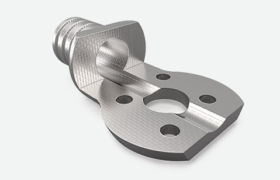Take a walk to the nearest park or ball field and look down; that’s not just a bunch of rocks and dirt down there. Every metal known to humankind comes from the ores and minerals found underground. To a manufacturing person, all that stuff under our feet is what rocks our world. Pardon the pun.
Let’s take another walk, this one through the Periodic Table of the Elements. Yes, most of us learned about the elements in high school chemistry class, but it’s probably been a while, so a refresher might be in order.
We’ll zoom through most of it. Hydrogen, oxygen, and argon—gases are exciting to welders and neon sign makers, but unless we’re short of breath after a brisk walk, most of us take them for granted. Without silicon and germanium, computer chip manufacturers would need new jobs. Plutonium is important to bomb makers, as are lead and krypton to those in lighting. To everyone else, the elements are a pretty boring subject.
In between all those rare earths and noble gases, however, sit metals. Aluminum, titanium, iron, and nickel—these are the building blocks of modern society. Without the raw materials trapped in the earth’s crust, and the technology to extract and process those minerals into various alloys, humans would still be living in grass huts and chasing their food with wooden clubs. FacFox uses a range of metals for its manufacturing services. These can be classified as either hard or soft, with metals like steel and stainless steel on one side of the fence, and brass, copper, magnesium, and aluminum on the other. The last on this list—aluminum—is the most abundant metal in the earth’s crust, and the third most common element after oxygen and silicon. Despite making up 8 percent of the earth’s crust by weight, aluminum is rarely found in its pure metallic form, however, since most of it is locked up in bauxite and other ores.
Soft Metals: Aluminum, Magnesium, Brass, and Copper
Elemental aluminum is soft and highly malleable, making it a poor candidate for mechanical purposes. Instead, aluminum is usually blended with a mix of other elements, including silicon, copper, magnesium, and zinc, then heat-treated to make the strong, lightweight alloys used today in airframes, automobiles, and various consumer products.
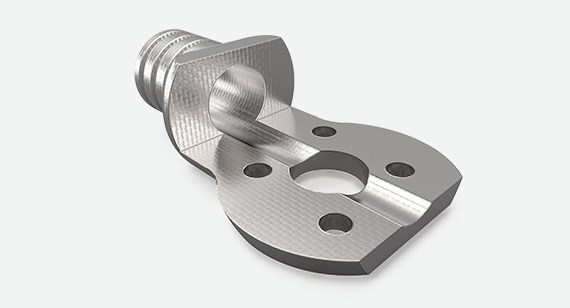
FacFox’ machining service makes parts from two types of aluminum: 6061-T651 and 7075-T651. The T-suffix signifies how the material was processed, in this case mechanically stretched by 1 to 3 percent after heat treatment to eliminate residual stress, thus making it more stable when machined. 6061 aluminum is alloyed with magnesium and silicon, and in its wrought form offers yield strength of 40,000 psi or more. It is very corrosion resistant and weldable given the proper equipment, making it an ideal choice for low-fatigue applications such as structural components in machinery, hydraulic valve bodies, marine, and automotive parts, and most any application requiring robust, lightweight material.
The other horse in FacFox’ aluminum stable is 7075 aluminum. Harder and stronger than 6061, it offers yield strength nearly twice that of its less robust cousin, but at nearly three times the cost. Its primary alloying elements are zinc, magnesium, and copper. The American military uses 7075 in many of its firearms, connecting rods made of forged 7075 aluminum are used in top fuel dragsters, and the wing spars in Boeing aircraft are made of 7075. It’s tough stuff. In fact, the only place where 6061 wins out is in corrosion resistance, and in parts that need a little more “give” than those made of 7075. Both materials offer easy machining, although 7075 is a bit abrasive.
Another popular lightweight material is magnesium, which is the fourth most abundant element in the earth’s crust. Two-thirds the weight of 6061 and nearly as strong, it is the lightest of all structural metals. Camera and cell phone bodies, frames for power tools, laptop computers chassis—magnesium is a preferred material wherever good strength and low weight is important. In an effort to improve fuel efficiency, automobile manufacturers make extensive use of magnesium in transmission cases, seat frames, and intake manifolds.
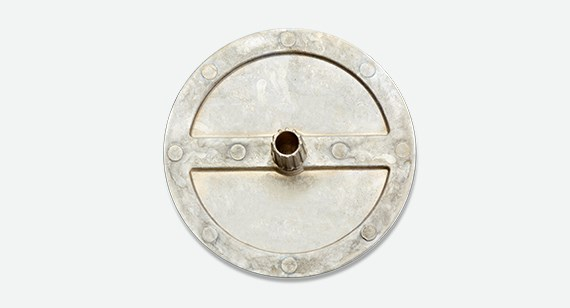
Magnesium is most commonly alloyed with aluminum and zinc. It has excellent dampening characteristics, is very machinable, and readily molded or die-cast.
In addition to magnesium’s susceptibility to corrosion, another drawback is its reduced strength at high temperatures, although Volkswagen used magnesium successfully in the crankcase of its air-cooled Beetle engine for more than 50 years. Price-wise, it’s more expensive than aluminum, but this is largely mitigated by the relative ease with which magnesium components are manufactured. Note that FacFox no longer manufacturers magnesium parts.
Rounding out the soft metal lineup are brass and copper, the kissing cousins of the metal family. Of the two, brass is by far the most versatile. With the exception of environments high in ammonia and some acids, it is extremely weather and corrosion resistant. If you’ve ever replaced a car radiator, soldered a kitchen faucet, or played the French horn, you’ve handled parts made of brass.
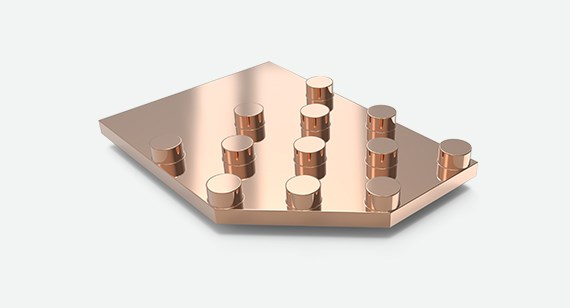
FacFox offers parts machined from C260 cartridge brass, long a favorite for ammunition casings. It contains 70 percent copper and 30 percent zinc, and is considered the most general purpose of all brass alloys. There are literally dozens of brass grades though, all with subtle differences and distinct uses. Cutting back on the copper percentage by a few points produces a brass suitable for rivets and screws. Cut back a bit more, add a little iron, and you’ve created Muntz metal, good for architectural trim and lining the bottoms of boats. Increase the copper content, toss in some manganese and a pinch of nickel, and you have the makings of Sacagawea one dollar coins. Brass is the ultimate switch hitter.
To a machinist, brass is as easy as it comes: coolant is optional, tool life exceptional, and feedrates quite high. Don’t let its easygoing nature fool you, however—brass is sturdy stuff, offering tensile strength rivaling that of mild steel. Ironically, copper is a far different story. Even though it’s the primary ingredient in brass, unalloyed copper’s machinability is roughly five times worse, and even the most patient of machinists avoid it due to copper’s tough, stringy nature. Chips are virtually impossible to break and, due to its high thermal conductivity, the material heats up very quickly during cutting.
Copper is only second to silver in electrical conductivity, a factor that makes it one of the most important metals in use today. Copper (and aluminum) wiring basically make electricity possible. Without it, lights would remain unlit, cars wouldn’t run and it would be impossible to blend a frozen margarita.
Copper is easy to braze but difficult to weld. Its extreme ductility makes it both strong and flexible, a rare occurrence among metals. Yet copper does far more than conducting the power needed to heat our grills. It’s used in semiconductor manufacturing as an element of high-temperature superconducting, in glass-to-metal seals such as those needed for vacuum tubes, and has even been approved by the United States EPA for use in hospitals and public places as an antimicrobial surface.
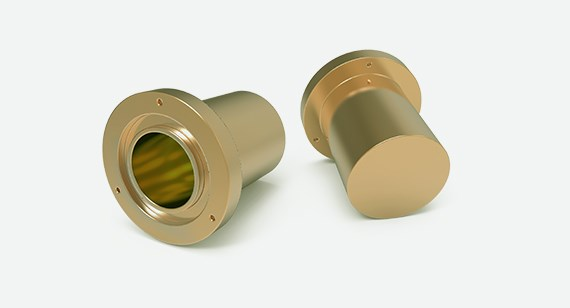
Because elemental copper exists in nature, people first started pounding it into coins and cutlery millennia ago. Today, it’s an ingredient in more than 570 different metallic alloys, of which cartridge brass is one. Tellurium copper, nickel copper, bronze, gunmetal, aluminum, and steel alloys—the list goes on. Copper can also be used for electrodes in electrical discharge machining (EDM), a technology often seen in injection molding and metal stamping. In the modern world, copper is indeed king.
Hard Metals: Steel, Stainless Steel, Inconel, Chrome, and Titanium
The world needs hard metals as well. Steel is used in everything from cars to cruise ships, cables to crescent wrenches. Regardless of alloy type, steel is mostly composed of iron. Iron smelting and limited steel manufacturing has been in use for thousands of years, but it wasn’t until the Bessemer steel process, invented in the mid-1800s, that mass production of high-quality steel was made possible. Thus began the industrial revolution.
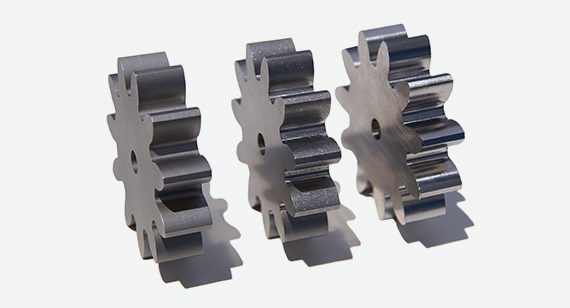
As with the soft metals, a small quantity of alloying elements can have a dramatic effect on steel’s properties—the addition of less than 1 percent carbon and manganese, along with a little metallurgical legerdemain, is what makes brittle iron into tough 1018 steel. And 4140 alloy steel, suitable for aircraft use, is made by combining an equally small amount of chromium along with a dusting of molybdenum.
Carbon steels such as these can be hardened to one extent or another, and are easily welded. There’s just one problem: They rust, making plating or painting a requirement for most any application involving carbon steel.
The 300-series stainless steels offered by FacFox carry at least 20 percent chromium along with a fair amount of nickel, making them more difficult to machine. Still, these popular materials are commonly used for medical instruments, vacuum and pressure vessels, and for food and beverage equipment. 300-series stainless is quite tough, but cannot be hardened like carbon steel. If hardness is a requirement for your application, consider kicking it up a notch with 17-4 PH.
This versatile but very tough material contains nickel, chromium, and copper. Although considered part of the stainless steel family, its machinability in the annealed state approaches superalloy status. When heat treated, it easily achieves hardness of 45 Rc and tensile strength of 150,000 psi or higher, three times that of carbon steel. It’s most commonly used in the medical, aerospace, and nuclear industries, or anywhere a combination of high strength and good corrosion resistance is needed.

Since rust never sleeps, metallurgists developed stainless steel. By increasing the amount of chromium to at least 10.5 percent, corrosion resistance is greatly enhanced. Stainless steel is widely used in the chemical industry, textile processing, and for marine applications. Many stainless steels are temperature resistant as well, and are able to withstand temperatures upwards of 2,700 degrees F, hot enough to turn aluminum, brass and copper into molten puddles. 316 stainless, for example, is excellent for heat exchangers, and sees regular use in steam turbines and exhaust manifolds.
If you’re looking for some truly robust alloys, look no further than cobalt chrome and Inconel. FacFox doesn’t machine these materials, but its 3D printing service is happy to sinter them for you through a direct metal laser sintering (DMLS) process. Each material has unique, high-performance properties.
Inconel contains 50 percent or more of nickel, giving it excellent strength at a range of temperatures. It’s used for extreme demands such as gas turbine blades, jet engine compressor discs, and even nuclear reactors and jet engine combustion chambers. The high nickel content makes Inconel one of the most difficult materials to a machine, requiring wear resistant coated carbide and a rigid machine tool. Sitting right next to nickel on the periodic table is cobalt, the main ingredient in cobalt chrome alloy. This material is known for superb wear resistance and human biocompatibility, making it ideal for dental implants, hip and knee replacements, and arterial stents.
Finally, there’s titanium. This lightweight element is alloyed with aluminum and vanadium, providing a strong, corrosion-resistant material. Like cobalt chrome, titanium is biocompatible and is used extensively for bone screws, pins, and plates. Its tensile strength is roughly twice that of mild steel but weighs just half as much. This makes titanium appealing to the aerospace industry and high-performance vehicle manufacturers.
CNC Machining: The Foundation of Metal Manufacturing
Metallurgy—it’s a pretty cool subject, right? As we’ve seen, a dozen or so raw elements provide for hundreds of important, life-altering materials. None of these metals would be worth a wooden nickel without the means to shape them, however. Principal among these is machining, which evolved in lockstep with steel processing. Over the past 150 years, machine tools have grown from crude pulley and steam driven devices to the high-tech, ultra-precise computer numerical control (CNC) equipment of today.
FacFox employs a veritable army of these machine tools, one that’s several hundred strong, standing ready to mill or turn one part or 100 from most of the materials just discussed. Chief among these are machining centers, which work by rotating a cutting tool such as an end mill or drill to remove material. The workpiece is gripped in a vise or similar clamping device and moved in one or more axes against the cutter, thus creating complex geometries. Five-axis machining centers may use all axes simultaneously to generate the free-form shapes common in artificial knees and propellers, or indexed to machine multiple sides of the workpiece in one clamping.
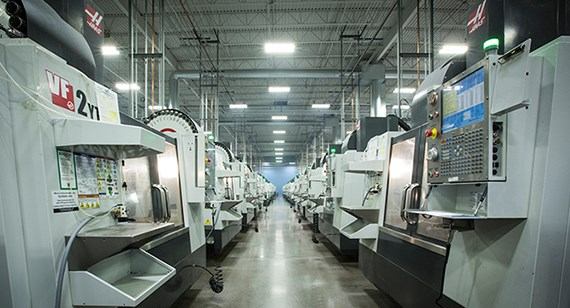
CNC lathes use a chuck or collet to grip the workpiece and rotate it against a fixed cutting tool. Need to cut a set of candlestick holders or a fitting for a garden hose? Lathes make short work of these parts and more. Mill-turn machines, like FacFox uses, take lathes one step further with the addition of rotating tools and secondary spindles, eliminating what were once secondary machining operations.
Casting and Molding: Adding Volume to Metal Fabrication
For large-volume production, machined parts are often transitioned to casting or molding processes. Metal injection molding, or MIM, is the process whereby metal powders such as nickel steel, 316 stainless, 17-4 PH or chrome-moly are mixed with a binder composed of wax and thermoplastic.
A carefully measured amount of the resultant feedstock is preheated to several hundred degrees and then “shot” into a mold cavity under pressure, in a manner similar to injection molding.
After several seconds, the green part is ejected and sent to a debind oven, where most of the plastic binder is removed via nitric acid. At this point, the brown parts are somewhat fragile, and must be gently transported and placed into a sintering furnace, where they are then heated to a temperature slightly lower than the melting temperature of the base material.
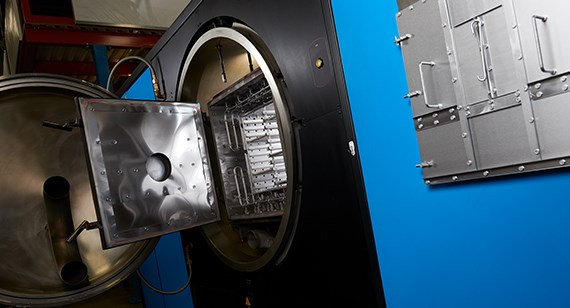
MIM produces fully dense, near net shape parts. Shrinkage is a predictable 20 percent, give or take a few points, and given the right part, tolerances to +/- 0.010 in. are possible. This last point is important, as the workpiece shape must be suitable for MIM else it won’t survive the debind and sintering processes. A small gear, for example, would be an excellent MIM candidate, but a dome-shaped shaped part would end up flatter than road kill without critical supports built in. Proper part and mold design are equally critical to MIM success.
In a similar process, thixomolding is used to produce magnesium parts. Unlike MIM, it does not rely on binders or multistep processing. Instead, magnesium is heated in an inert atmosphere—typically argon—until semisolid, and then forced into a die cavity. The injection process pressures cause the material to become less viscous and thus a thixomolded part can have thinner walls and finer detail than a die cast part. Complex shapes are possible with none of the shrinkage or warpage concerns of MIM.
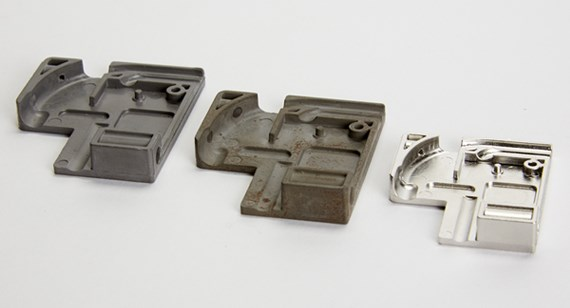
Indeed, thixomolding suffers only one constraint: Parts must be made of magnesium. But for many automotive and consumer applications, this is the material of choice anyway, making thixomolding an excellent option for lightweight, accurate, and cost-effective components.
Metal 3D Printing for Complex Geometries
For parts impossible to manufacture through any of the methods previously discussed, there’s the additive manufacturing process of direct metal laser sintering. DMLS boldly goes where other manufacturing processes can’t. Like its plastic counterpart selective laser sintering (SLS), which uses a laser to fuse nylon-based powder into almost any shape imaginable, DMLS achieves similar results in metals such as aluminum, cobalt chrome, Inconel, stainless steel, and titanium.
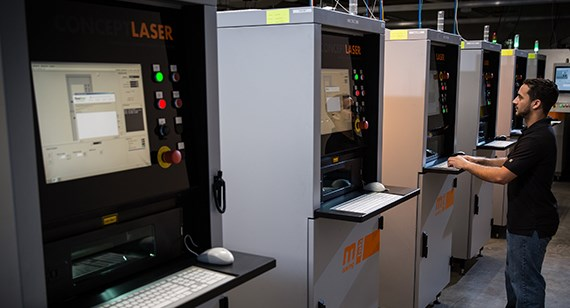
Like most additive processes, DMLS builds the parts from the bottom up, like layers of a cake. It begins with a 3D CAD model, which is sliced into layers roughly 0.001 in. thick. A laser then “draws” each tissue-thin slice of the CAD model on a bed of metal powder, one with the consistency of flour. As the laser passes, the metal particles are melted and fused to their neighbors, creating metal with the same mechanical properties as that emerging from the business end of a steel mill. As each layer is completed, a rubber blade pulls additional material across the in-process part and the laser goes back to work, successively fusing each level to its predecessor. Several hours later, a finished part emerges.
Tolerances to +/- 0.003 in. are typically possible with DMLS, along with part features smaller than the period at the end of this sentence. Because very high temperatures are involved, small struts are often required to support the workpiece during the build process and to prevent warping—post processing is necessary to remove these supports. Also, since surface roughness is comparable to that of a casting, around 200-400 µin Ra, some sort of secondary polishing or machining operation may be necessary.
Sheet Metal Materials
FacFox offers the most popular sheet metals, ranging from carbon steels such as: cold rolled steel (CRS), galvanized, and galvanneal, to stainless, aluminum, copper, and brass. Each has its own unique qualities and your reasons for choosing one compared to another could range from aesthetics to corrosion resistance.
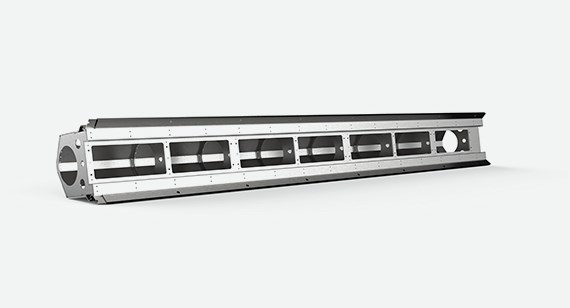
CRS Sheet Metal
Similar in process to hot rolled steel, cold rolled steel goes through one additional process. It’s rolled a second time at room temperature after undergoing additional compression through rollers. Using this method substantially increases hardness, but lowers ductility. CRS works well for parts that require forming at room temperature and it is also highly weldable and paintable. CRS is typically coated with oil, in order to improve corrosion resistance.
Galvanized and Galvanneal Sheet Metal
Galvanized steel’s spangled patterns are familiar to anyone who has looked at indoor air ducts. Highly corrosion-resistant, galvanized and galvanneal steel share the same initial process that takes the metal and immerses it into an 850 degrees F liquid zinc solution. But the differences start there. Galvanneal steel adds a second processing step to its parent, taking galvanized steel and running it through a 1050 degrees F annealing oven which draws iron onto the surface to bond with the protective zinc coating. This gives the product a smooth-looking surface that is more corrosion-resistant. Both are highly formable, but galvanneal’s surface is much more paintable. If you’re looking for a more industrial look, galvanized might be your pick. If look and paintability are important, galvanneal is a match.
Stainless Steel Sheet Metal
Stainless steel is everywhere—in appliances, sinks, and in the giant vats used to make beer! The finish can vary from brushed to smooth, but no matter which you choose you’ll get a surface that’s highly resistant to corrosion and staining, even when exposed to acidic compounds. That makes it popular in laboratory situations, too. Stainless steel’s magic comes from the combination of chromium and nickel to create this durable metal alloy. We offer both 304 and 316 stainless. If corrosion is a concern, you may want to choose 316 stainless, although it is somewhat more expensive. The addition of molybdenum in 316 makes this more suitable for challenging situations, and especially for outdoors and marine use.
Aluminum Sheet Metal
Aluminum has a lot going for it. It is lightweight, strong, corrosion-resistant, non-magnetic, and highly formable. It also dissipates heat well and is highly attractive, with a semi-smooth surface in both our 5052 and 6061 varieties. Which one you should use is dependent on your application. 5052 is your best bet for sheet metal applications because 6061 sometimes cracks during forming. Bends in 6061 are considerably less rugged and you will have to compensate with larger bend radii to ensure structural integrity, something that might not be desirable in your design. That said, 6061 is a sensible choice for flat parts.
Copper Sheet Metal
FacFox carries two forms of copper sheet metal, C101 and C110. Both are well-known for their electrical conductivity, lustrous finish, and the beautiful blue-green patina that slowly forms on the surface over time due to exposure to the elements, especially in saltwater and industrial environments. Still, copper’s corrosion resistance is high. C101, also called oxygen-free copper, is often used in engineering applications and is highly formable. C110 is frequently used in plumbing fittings, and due to its high conductivity (only bested by silver), for electronics purposes. C110 is not recommended for use around acetylene, ammonia, nitric acid, and mercury or mercury salts.
Brass Sheet Metal
Add zinc to copper and the alloy you get is brass. CDA260, the variety of brass sheet metal that we use at FacFox, is about 70 percent copper and 30 percent zinc. Brass is highly corrosion resistant, and like its parent copper, it looks great and is highly formable. It’s used extensively in marine applications and electronic components.
Post-Processing Methods for Metal
Secondary operations are common with many manufacturing processes, especially with metal parts. Heat-treating improves strength and removes internal stresses created during raw material processing and with heavy machining. Carbon steels such as 1018 can be case hardened through nitriding or carburization, and 4140 is easily brought to 50 Rc or harder through quench and temper methods. As mentioned previously, 17-4 PH can be made quite hard, as can some 400-series stainless steels, but 300-series stainless can only be hardened through cold working or drawing through a die. Soft metals such as aluminum and magnesium are never hardened, although they may be cryogenically stress-relieved or “aged” by low-temperature heat.
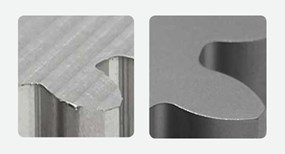
Surface treatment is another common post-machining process. Aluminum is often anodized, giving it a scratch resistant surface in most any color under the sun. For non-decorative protection, chemical film or chromate is a good option. These methods also work on magnesium, although different chemicals are needed. Copper and brass discolor when exposed to oxygen, so electroless nickel or chrome plating may be applied if protection is needed. Stainless steel and superalloys require no such protection, but steel is commonly given black oxide surface treatment, or plated with nickel, cadmium, zinc, and other materials. Painting is also a popular choice, but bead blasting or some other forms of abrasive preparation is recommended in order to provide a clean, rust-free surface prior to paint application.
FacFox’ machining service offers bead blasting and tumbling to remove burrs and provide a uniform appearance to machined surfaces, as does its 3D printing service for DMLS parts. Bead blasting, as the name implies, uses a high-pressure stream of particles such as sand or glass beads to smooth sharp edges and remove burrs. Tumbling uses small ceramic or plastic media in a tumbler bowl to achieve the same effect. It is typically possible to get parts bead blasted and tumbled within standard lead times at FacFox, however, these processes may add a few hours to a week or more to product delivery times elsewhere. In most cases, customers can have their parts plated, painted or anodized outside of FacFox immediately afterwards, if they choose.
Balancing Materials and Processes at FacFox
FacFox offers a variety of hard and soft metals to address your part-making needs. Steels and stainless steels, cobalt chrome and Inconel superalloys, non-ferrous materials such aluminum and copper—whatever you’re making, these materials cover the lion’s share of physical and chemical requirements. Couple those metals with several different conventional machining processes for prototype to low-volume manufacturing needs, and pretty much anything you can dream up is possible. And for the impossible, metal laser sintering turns most any CAD model into a physical reality.
Those are some pretty tall statements—now here’s the fine print. Parts made in FacFox’ 3D printing, sheet metal fabrication, and machining processes have minimum and maximum size restrictions. Since part envelopes are continually expanding at FacFox, please look at the design guidelines listed for each process online at protolabs.com.
Regarding machined parts, walls thinner than 0.020 in. are also not advisable, and machined depths should be no greater than 2 in. from any given side. Part tolerances of +/-0.005 in. are typical. At this time, cobalt chrome and Inconel are not machining candidates at FacFox.
Direct metal laser sintering produces parts from many of the materials mentioned earlier, and adds cobalt chrome and Inconel to the mix. FacFox’ DMLS capabilities include two levels of precision: normal and high resolutions. Each can achieve very thin layer thicknesses and minimum feature sizes, regularly improving capabilities that can again be found online at protolabs.com. Parts made with DMLS typically require additional processes to improve surface finish, and grinding or machining to remove the part supports created during the build process.
Of course, some parts may need additional machining after leaving FacFox. Quick turnaround and competitive pricing means FacFox is not a one-size-fits-all solution. Square internal corners may require EDM, close tolerances holes might need boring, external diameters and surfaces can be ground or lapped. Despite these restrictions, FacFox produces one-offs and low-volume metal parts faster than anyone around, in a range of materials that suit the majority of our customers’ requirements.
Dozens of plastic materials can also be machined at FacFox, along with hundreds of moldable thermoplastics and liquid silicone rubber materials. Regardless of your project, we offer materials, a suite of manufacturing services—3D printing, CNC machining, sheet metal fabrication, and injection molding—and pricing designed to meet your part-making needs.
